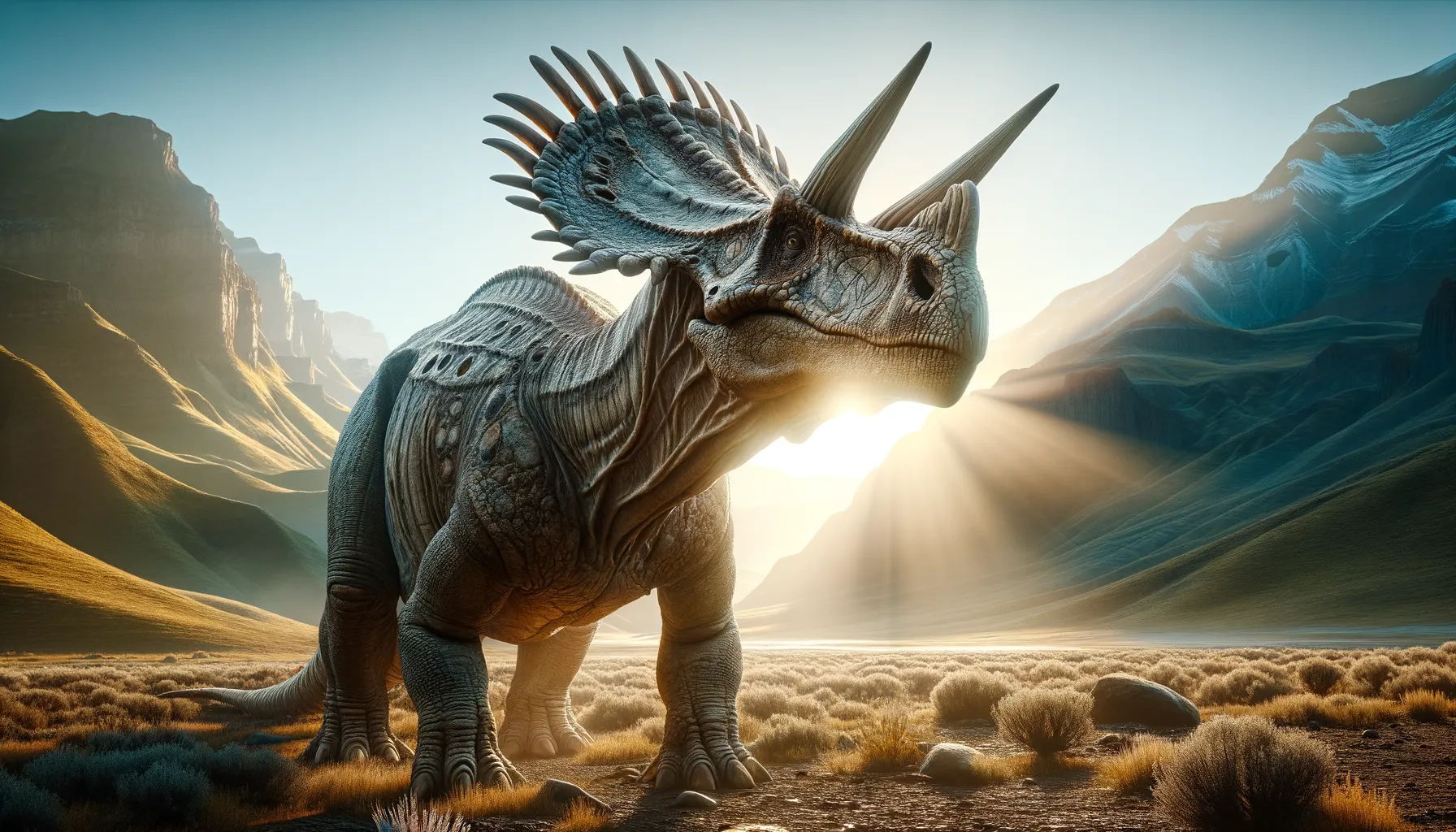
Pachysauriscus
Thick-skulled giants of the ancient world!
Period
Cretaceous
Length
Measured approximately 25 feet from head to tail.
Height
Stood about 8 feet tall at the shoulders.
Weight
Roughly 1.5 tons, similar to a modern rhinoceros.
Pachysauriscus was a large, herbivorous dinosaur with a bony head, used for defense and possibly for social interactions. It lived during the Late Cretaceous period, around 70 million years ago, roaming in what is now Mongolia. Fossils of Pachysauriscus have provided significant insights into the ancient ecosystems of Asia. Known for their thick skulls, these dinosaurs likely used their unique physical features to interact with one another.
Diet
Pachysauriscus was a herbivore, feeding primarily on the lush vegetation that thrived during the Late Cretaceous period. Its diet consisted of ferns, cycads, and conifers, which were abundant in its environment.
Hunting
Being a herbivore, Pachysauriscus did not hunt but foraged for plants. Its robust jaw and teeth were adapted to chewing tough plant material, allowing it to effectively process its vegetarian diet.
Environmental challenges
Pachysauriscus faced environmental challenges such as climate fluctuations, which affected the growth of its preferred food sources. Predation by larger, carnivorous dinosaurs also posed a constant threat. To mitigate these challenges, Pachysauriscus may have relied on its physical strength and herd behavior for protection.
Speed
Moved at moderate speed, slower than predators.
Lifespan
Estimated to have lived for several decades.
First discovery
First fossils found in Mongolia in the mid-20th century.
Fun Facts
- Pachysauriscus was a dinosaur from the Early Jurassic period, meaning it lived around 200 million years ago.
- Despite its name, which suggests a relation to 'thick lizards,' Pachysauriscus was actually a herbivore, munching on plants and vegetation.
- Pachysauriscus was relatively small compared to other dinosaurs, making it more agile and quick on its feet.
- Fossils of Pachysauriscus have been found primarily in what is now Europe, giving us clues about their habitat and lifestyle.
- Not much is known about Pachysauriscus, making it a bit of a mystery and an exciting subject for paleontologists.
- Its unique name 'Pachysauriscus' might confuse some people into thinking it has a thick skin or bones, but it was actually named for its relation to a group of dinosaurs known for such features.
- Pachysauriscus is a great example of the diversity of dinosaur species that roamed the earth millions of years ago.
Growth and Development
Pachysauriscus likely experienced rapid growth during its juvenile stages, reaching significant size quickly to reduce vulnerability to predators. As the dinosaur matured, its bone structure would have solidified, contributing to its signature thick skull. This development played a crucial role in its social interactions and defense mechanisms.
Habitat
Pachysauriscus inhabited forests and floodplains, where abundant vegetation supported its herbivorous lifestyle. The region's climate during the Late Cretaceous provided a warm environment, promoting diverse plant life. Water sources were critical, serving both as a drinking supply and habitat for a variety of other organisms.
Interaction with other species
Pachysauriscus likely shared its environment with other herbivorous dinosaurs, competing for resources such as water and food. Its thick skull may have played a role in social dominance or mating competitions within its species. Coexistence with carnivorous dinosaurs would have required vigilance and cooperation among Pachysauriscus individuals to fend off predation attempts.
Natural lifespan
Pachysauriscus could live up to 50 years in the wild.
Reproduction
Pachysauriscus likely laid eggs, as with most dinosaurs, choosing secluded but safe locations to minimize predation risks. Parental care levels are debated, though some suggest adults may have guarded nests. Juvenile growth was rapid, enabling survival in a competitive environment alongside larger species.
Social behaviour
These dinosaurs possibly lived in herds, granting safety in numbers from predators. Herd dynamics may have included complex social structures, potentially dictated by their thick skulls used in dominance displays. Communication within groups could have ranged from visual signals to low-frequency sounds.
Fossil locations
Fossils of Pachysauriscus have been primarily discovered in Mongolia, a region rich in diverse Late Cretaceous deposits. These findings contribute significantly to understanding the prehistoric ecosystem of Central Asia. Discoveries are supplemented by occasional findings in other parts of Asia, offering broader insights into their geographical distribution.
